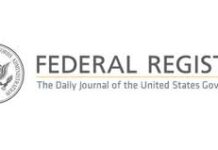The surprising results of the 2016 election have many scrambling to figure out what is next. So we are going to leave the speculation of change to the Affordable Care Act, Medicare Access and CHIP Reauthorization Act (MACRA), EHR, value-based medicine, and the potential impacts to patients and physicians to future articles and focus on what we think we know. We encourage all to get connected and get involved where you can to help direct health care change in a direction that makes sense for urologic care.
The newly elected government will not assume office until next year. Thus, the final rule for payment in 2017 and the final rule published for the new Quality Payment Program will have passed through the 60-day comment period, will go into effect Jan. 1, 2017, and will likely remain in effect for the year. Based on this relative certainty, we will focus this article on these two rules and what you should do to prepare for the impact of these on your urology practice. (For more on the Medicare final rule, please see, “Final rule: Good news, bad news for urologists”)
Change in conversion factor, RVUs
The conversion factor for 2017 is $35.8887, a slight increase over the current conversion factor for 2016. There have been a few changes to relative value units (RVUs) for urology services. Although the majority of RVU changes are less than +/–2%, the overall impact of the RVU changes for urology payments for 2017 is projected to be –2%. The overall impact to urology takes into account only the projected payments for 2017 based on the number of services provided in 2015.
Tables 1A and 1B depict a few of the largest percent changes for identified urology procedures. The fee values represent the total unadjusted RVU multiplied by the appropriate conversion factor for each year. The % value differential is based solely on the RVU differential as it relates to the current relative value. Therefore, the % differential may be slightly different than the actual payment % differential. Of course, each geographic region will have a slightly different final fee when Geographic Cost of Practice Indices are applied.
Of course, the biggest impact in these changes across urology are the RVU adjustments to cystoscopy and catheter codes. This list includes codes with an RVU change greater than +/–10% with the exception of code 55866. 55866 represents a win for urology thanks to the efforts of the AUA, as the laparoscopic/robotic prostatectomy was targeted for another reduction. Thank you, AUA.
CMS finalizes approach to global data collection
The Centers for Medicare & Medicaid Services has finalized its approach to collecting information on global periods in compliance with MACRA. We are fortunate that CMS has abandoned its push to force all physicians to report pre- and postoperative visits to Medicare under a set of new G codes.
Instead, the final rule will require only practitioners who practice in groups with 10 or more practitioners in Florida, Kentucky, Louisiana, Nevada, New Jersey, North Dakota, Ohio, Oregon, and Rhode Island to report postoperative encounters, using CPT code 99024 for postoperative services furnished during the global period of higher volume procedures provided on or after July 1, 2017.
Changes in relative value units, non-facility / office |
|||||
| Code | Modifier | Description | 2017 non-facility fee ($) | 2016 non-facility fee ($) | % value differential |
| 50606 | 00 | Endoluminal bx urtr rnl plvs | 717.06 | 536.71 | 33.3 |
| 50705 | 00 | Ureteral embolization/occl | 1,971.73 | 1,731.50 | 13.6 |
| 50706 | 00 | Balloon dilate urtrl strix | 1,016.73 | 776.60 | 30.6 |
| 55700 | 00 | Biopsy of prostate | 253.37 | 221.27 | 14.2 |
| 50592 | 00 | Perc rf ablate renal tumor | 1,256.10 | 2,586.50 | -51.6 |
| 51700 | 00 | Irrigation of bladder | 74.29 | 84.50 | -12.3 |
| 51701 | 00 | Insert bladder catheter | 48.45 | 55.50 | -12.9 |
| 51702 | 00 | Insert temp bladder cath | 64.24 | 71.61 | -10.5 |
| 51784 | 00 | Anal/urinary muscle study | 70.70 | 194.42 | -63.7 |
| 51784 | 26 | Anal/urinary muscle study | 38.76 | 78.77 | -50.9 |
| 51784 | TC | Anal/urinary muscle study | 31.94 | 115.65 | -72.4 |
| 52000 | 00 | Cystoscopy | 167.96 | 207.31 | -19.2 |
| Source: Adapted from the Centers for Medicare & Medicaid Services by Ray Painter, MD and Mark Painter | |||||
CMS has indicated that the list of approximately 260 codes with both 10- and 90-day global periods to be included in the study will be published on the CMS website. Further, CMS has elected not to include a payment penalty at this time.
Practitioners who only practice in smaller practices or in other geographic areas are encouraged to report data, if feasible. Any group that is required to report or elects to report the 99024 voluntarily will need to be certain to report all visits during the global period, regardless of where the encounter occurs, by submitting the code 99024 with the appropriate place of service and service date. This is doubly important because it is required by the regulation, and underreporting the visits may result in a decrease in the global payment for that procedure in the future.
There is no requirement set forth that requires the use of a same or separate claim, leaving this to the discretion of the group submitting. Documentation of the encounter should be included in the medical record; however, there is no specific requirement of medical history, physical examination, or medical decision-making required, but the documentation should support the actions taken during the encounter.
In addition, CMS will work with RAND to survey a sample of physicians for additional data to support the global values. We encourage any of you selected to participate fully in the study.
Changes in relative value units, facility |
|||||
| Code | Modifier | Description | 2017 facility fee ($) | 2016 facility fee ($) | % value differential |
| 51700 | 00 | Irrigation of bladder | 37.32 | 46.19 | -19.4 |
| 51701 | 00 | Insert bladder catheter | 26.56 | 28.64 | -7.5 |
| 51702 | 00 | Insert temp bladder cath | 26.56 | 31.15 | -14.9 |
| 51720 | 00 | Treatment of bladder lesion | 66.75 | 82.35 | -19.1 |
| 51784 | 26 | Anal/urinary muscle study | 38.76 | 78.77 | -50.9 |
| 52000 | 00 | Cystoscopy | 105.51 | 129.61 | -18.8 |
| 54690 | 00 | Laproscopy orchiectomy | 684.76 | 764.42 | -10.6 |
| 50782 | 00 | Reimplant ureter in bladder | 1,237.80 | 1,086.66 | 13.6 |
| 55725 | 00 | Drainage of prostate abscess | 677.94 | 610.11 | 10.9 |
| 55866 | 00 | Laparo radical prostatectomy | 1,497.99 | 1,442.20 | 3.6 |
| Source: Adapted from the Centers for Medicare & Medicaid Services by Ray Painter, MD and Mark Painter | |||||
The combination of the claims data and the RAND survey data will be used to analyze the values of all services with a global period of 10 or 90 days. Based on the data, CMS will release a proposed method that will be used to determine adjustments if any to the final global values included in the Medicare Fee Schedule.
Finally, while CMS believes that the method listed above will satisfy the MACRA requirements without implementing a 5% withhold on those that do not participate as required, it has of course reserved the right to expand the study and implement the penalty in future years if the limited sampling process is not successful.
2017 is confusing because we have two programs working at the same time. Some practices are being penalized for the data collected in 2015 from the old meaningful use (MU), Physician Quality Reporting System (PQRS), and value-based payment modifier program (VBM), and this is the first year to start collecting data for the Merit-Based Incentive Payment System (MIPS).
On Oct. 13, 2016, CMS released its final rule for the Quality Payment Program to comply with MACRA. This release included significant changes for the first year of the program data collection, which begins Jan. 1, 2017 to affect payments to tax identification numbers in 2019. You may recall that MIPS and the associated Advanced Alternative Payment Model (AAPM) will replace the current payment modification system that includes PQRS, MU, and the VBM as required by MACRA in exchange for the removal of the sustainable growth rate conversion factor adjustment from April of 2015.
The final rule introduced 2017 and 2018 as transition years, significantly relaxing reporting requirements for the first 2 years of the program. For the purposes of this article, we will focus only on 2017. Further, as the AAPM is projected to be achievable only by groups that are already working on APMs, we will focus here only on MIPS. We recommend that you study the program further as you begin to develop your long-term strategies. More information can be found at https://qpp.cms.gov.
For 2017, the MIPS program consists of four performance categories; however, CMS has elected not to include the Cost performance category of the program in penalty or bonus calculation due to feedback on the proposed rule.
The program piggybacks on programs that are already in place and affecting some urology group payments for 2017. CMS has relaxed the number of requirements for the Quality performance category (formerly PQRS) from nine measures to six. The Advancing Care Information (formerly MU) performance category has also been relaxed somewhat as this requirement has been lowered to five measures and many of the thresholds for qualifying have been lowered to one. Reporting of these parts of MIPS is similar to the reporting that currently exists for PQRS and MU.
The new Clinical Practice Improvement Activities can be selected from a list of approved actions and will require reporting through attestation.
More detail for the program can be found on https://qpp.cms.gov. Physician Reimbursement Services will also include the measures on the AUACodingToday website – http://auacodingtoday.prsnetwork.com
In addition to including the full list of measures and the reporting methods available, each website includes a new measure list approved for urology by CMS. This list includes a full list of measures that CMS expects most urology groups to select from.
For 2017, you have four options to participate in the program.
First option-Full participation:
- Report all three parts of MIPS.
- Participate for the full 90-day period or, ideally, the full year, and maximize the MIPS-eligible clinician’s chances to qualify for a positive adjustment.
- Exceptional performers are eligible for an additional positive adjustment for each year of the first 6 years of the program.
Second option-Partial participation:
- Report more than one quality measure, more than one improvement activity, or more than the required measures in the Advancing Care Information performance category report to MIPS.
- Participate for a period of time less than the full year performance period 2017 but for a full 90-day period at a minimum.
- Avoid a negative MIPS payment adjustment and possibly receive a positive MIPS payment adjustment.
Third option-Minimal participation:
- Report one measure in the Quality performance category, one activity in the Clinical Practice Improvement Activities performance category, or report the required measures of the Advancing Care Information performance category.
- Avoid a negative MIPS payment adjustment.
Fourth option:
- MIPS-eligible clinicians can participate in Advanced APMs, and if they receive a sufficient portion of their Medicare payments or see a sufficient portion of their Medicare patients through the Advanced APM, they will qualify for a 5% bonus incentive payment in 2019.
- This is not an option unless you are already prepared to go.
MIPS-eligible clinicians choosing to not report even one measure or activity will receive the full negative 4% adjustment.
2017 and 2018, with the options available, will allow most urology practices to avoid penalties, and it is expected that some urology groups will receive bonuses.
We would encourage any group to consider options one and two if you are currently successfully reporting PQRS and MU. If you are reporting only one of these programs or are not reporting at all, consider option three. Option three is very easy to accomplish; this may be the preferred path for many urology groups. If you choose not to participate in the MIPS program at all, your payment from traditional Medicare for 2019 will be negatively affected.
Summary
There are many issues to consider as you look at both the final rule and the Quality Payment Program. The initial projections from Medicare indicate that only 4.9% of urology practices will be penalized under the Quality Payment Program. As you look at your practice for 2017, you will have to balance both the potential gain and the cost of working toward that end. Remember that the Quality Payment Program applies only to traditional Medicare payments; this means that your Medicare Advantage payments are not subject to the same rules.
Some of you with a low percentage of traditional Medicare and high percentage of Medicare Advantage may wish to commit your resources to compliance with your MA payment contracts at the expense of the Medicare program. Many of you will long term need to take a realistic look at the cost of trying to receive a bonus and instead of playing Quality Payment Program to win, play to survive by being average, which by definition will be where the vast majority of practices fall.
In short, look carefully at all you must do and focus on what makes sense to your patients and your practice.



